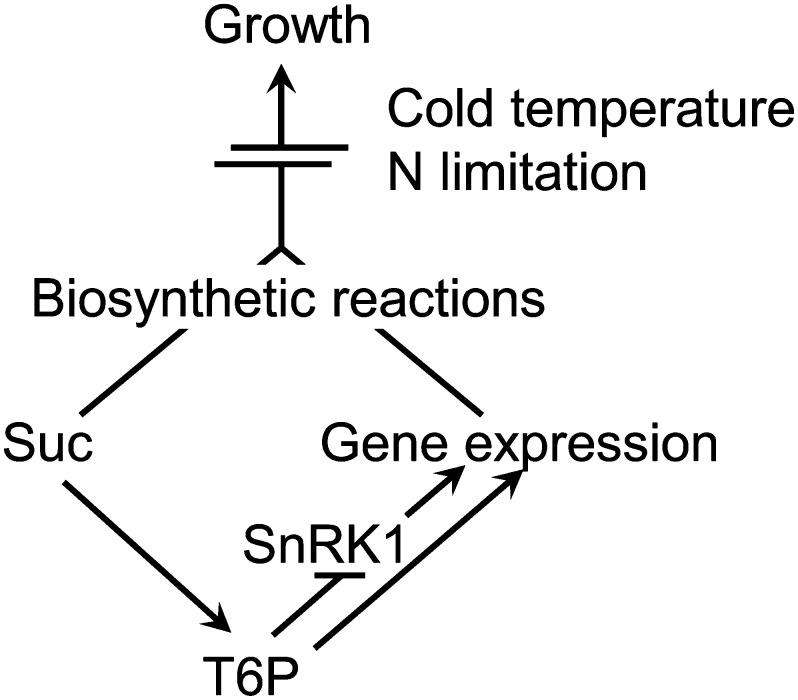Figure 8.
Model for the role of T6P in priming growth. T6P content is closely related to Suc availability. By inhibiting SnRK1 (and possibly also through SnRK-independent regulation), T6P increases the expression of biosynthetic genes, e.g. for protein, nucleotide, and cell wall synthesis. Under favorable conditions, the availability of Suc, together with the changes in gene expression, can result in enhanced growth. However, under some stress conditions, growth is limited despite Suc accumulation. Cold temperature, for example, does not only slow down metabolic rates, but also restricts growth through reduced gibberellin content and accumulation of growth-repressing DELLA proteins (Achard et al., 2008). N limitation reduces growth rates partly because of lower rates of, for example, protein synthesis, but also through interaction with hormones (Krouk et al., 2011), such as reduced synthesis of cytokinin at low nitrate availability. Under these conditions, T6P can prime growth by stimulating the expression of biosynthetic genes, which together with the availability of Suc results in a rapid growth spurt once restrictions, such as cold temperature, are released.

